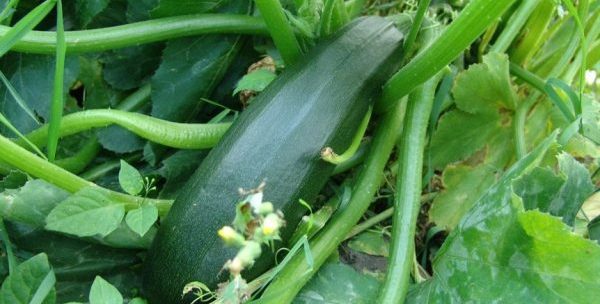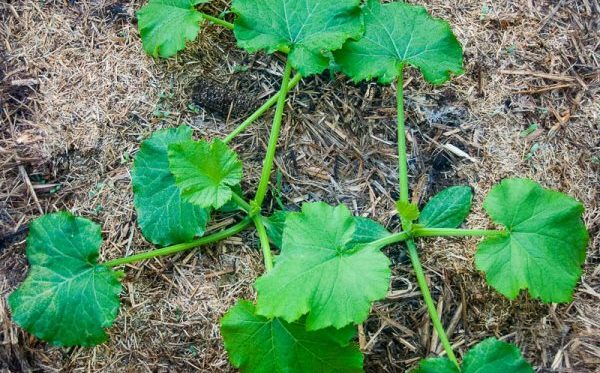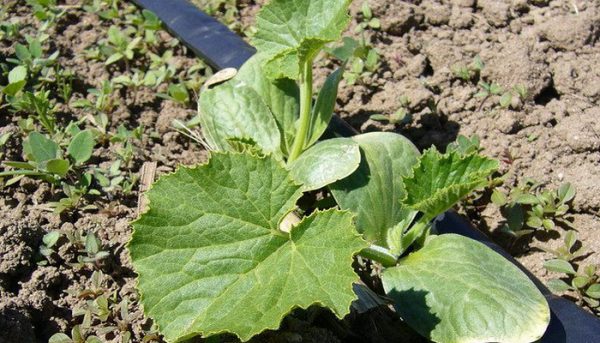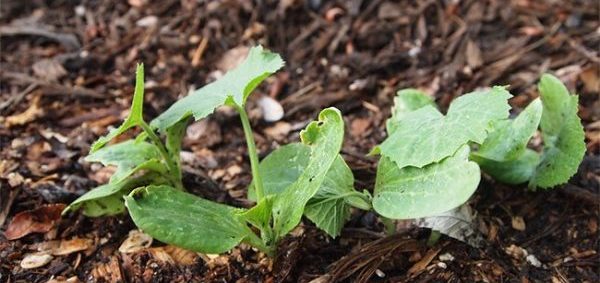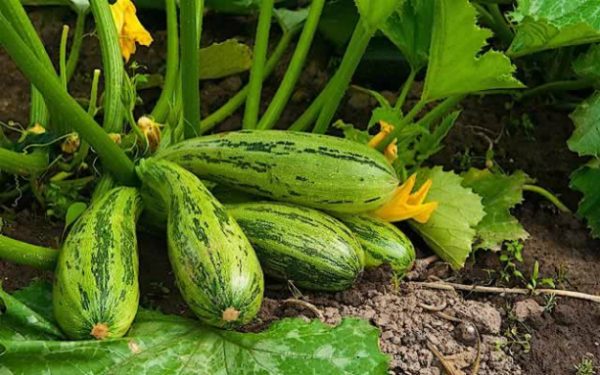Zucchini Growing Tips: From Planting to Harvesting
Content
Conditions for fruiting
Zucchini grows well in the greenhouse and in the garden. In the south, they are sown directly to the garden; in the middle lane, marrow seedlings can be planted in the ground in early summer. For three warm months, you can get 10 - 20 fruits from each plant. Zucchini is an annual bush plant related to pumpkin and cucumbers, and there are shrubs and long-leaved species. It has large beautiful leaves, light green or dark green, strong stem, most often pubescent.
The root system is more ramified than cucumbers, so squash is able to survive dry periods. Flowers of both sexes are large yellow bells. The fruits are cylindrical in shape, they are almost white, green, very dark, striped or bright yellow.
Growing zucchini in the garden (or greenhouse) must comply with the rules of crop rotation. This is how zucchini is not grown after related crops - cucumbers, pumpkins, squash - their roots are located approximately on the same horizon, which means that useful substances from this soil level have already been selected, but microbes and pathogenic bacteria dangerous for related plants have accumulated. It is better to radically change the types of plants, plant zucchini after onions, garlic, parsley, legumes, carrots, tomatoes or potatoes. Since the seedlings of zucchini are planted not earlier than June, it is possible to have time to grow green manure in the place of the future garden.
Zucchini need warmth and moisture, but it is better to grow them away from groundwater. They grow well as long as the temperature is in the range of +18 - +25 degrees, they tolerate painlessly if it drops to +5 degrees for a while.
Video "How to grow a good harvest a month earlier"
Demonstration video with examples of growing zucchini, as well as tips on how to grow a good crop a month earlier.
Preparing the beds
A place in the garden for zucchini is chosen sunny, but windless. In the shade, they will not grow poorly, but they will stretch out strongly and the fruits will not pick up the proper amount of nutrients. In addition, a shady place will reduce yields, because pollen from female flowers will not ripen well. With a short daylight hours, flowering and the ripening of the fruit itself is accelerated.
The soil is needed loose and fertile; chernozems and loams are best suited. How to grow zucchini if the soil is not suitable? It's very simple - you need to prepare a bed that they like. This needs to be done in the fall - to remove all the weeds, dig deep into the area, make the necessary adjustments and fertilizers, mineral and organic. If the soil is clay, add half a bucket of peat, sand and humus, 2 glasses of wood ash and 1 tablespoon of complex fertilizer for each square meter of planting area.
If there is sandy soil on the site, it is imperative to add a whole bucket of peat, humus and sod land, 2 glasses of ash and 1 tablespoon of nitrophoska to it.In addition to compost or humus (half a bucket), 1 bucket of clay or loamy soil, 2 glasses of ash and 1 tablespoon of complex mineral fertilizer are added to the peat soil. This is the amount of substances for one square meter.
Prepared or corrected soil needs to be dug up very well, leveled, form beds, preferably high, up to 80 cm wide.Zucchini grow well on manured soil, but if it has not been brought in in the fall, only rotted manure can be brought in in the spring, not fresh at all. If there is not enough organic fertilizers, then they are applied directly to each well. So each hole can be enriched by mixing humus (1 l), wood ash (1 tablespoon), mineral fertilizers (1 teaspoon) with the soil. When the soil is very poor, you can dig holes 30 by 30 cm, fill them with manure or humus, pour the soil with a 15-centimeter layer on top, and plant the plants in it.
Zucchini in a greenhouse is planted at a distance of half a meter from each other. Before this, the soil is disinfected with a 1% solution of potassium permanganate, and 1 square meter of land should get at least 3 liters of solution. In the garden, zucchini are planted in rows with a distance of 70 cm and 50 - 70 cm are also left between the plants. Plants should not be crowded and shade each other, and the roots need a lot of space.
Sowing and growing seedlings
Unprepared seeds may not germinate well, therefore, a number of manipulations are carried out with them before sowing. First of all, they need to be warmed up, it is convenient to do this by tying (or simply laying) them to a warm steam heating battery for the night. Then the seeds need to be disinfected, for this they are soaked for a short time with a warm one percent solution of potassium permanganate.
It is advised to soak them in warm water for a few more hours, you can use not just water, but a solution of ash, nitroammophoska or mineral fertilizers. After that, the seeds are washed and laid out between layers of damp cloth. After the appearance of "spouts" more than 0.5 cm long - it's time to sow.
If spring has come completely, the soil has warmed up to 14 degrees, you can sow seeds directly on the garden bed. 2 or 3 seeds are buried 3 cm with their "spouts" down, covered with earth, it would be good to mulch it with peat from above. With the appearance of a real leaf in the seedlings, they thin out so that one plant remains in the hole, others pinch off, and do not pull out, because they have very delicate roots. This is done when grown without seedlings. But most often, seedlings are first grown at home or in greenhouse conditions, and then they are planted on the site. So you can get the fruits earlier.
Seedlings are moved to the garden at the age of 20 or 30 days. Knowing this, given the timing of the arrival of heat in your area, you can easily decide when to sow. Thus, if you need to plant zucchini from May 20 to June 10, then you need to sow on April 20 - May 5. If caring for zucchini is supposed to be indoors, sowing is done earlier, on April 10 - 20. Zucchini are perfectly stored for a long time, so for storing ripe fruits until the spring of next year, it is better to do without seedlings, and sow the seeds in June directly on the garden - the fruits will ripen later, but will be stored for a long time.
For seedlings, a soil mixture is prepared as follows: mix sod land (5 parts), peat (3), humus (2); add superphosphate (20 g), ammonium nitrate (10 g), potassium sulfate (5 g), wood ash (1 glass) to 1 bucket of this soil. All this is laid out in jars or a pot of approximate size 10 by 10 cm, spilled with potassium permanganate (1%). The seeds are buried 2 cm, they are usually planted in 2 in each container, and after the appearance of a real leaf, a weak sprout is pinched off.
It is necessary to grow seedlings at a temperature of +18 - +22 degrees, watered weekly with warm water, preventing the earth from drying out. At the age of one week, the seedlings are fed by diluting 1 tablespoon of superphosphate and half a tablespoon of urea with 5 liters of water.The second time the seedlings are fed a week later. For the second feeding, dilute 1 tablespoon of any complex mineral fertilizer with 5 liters of water. You don't need to dive.
Landing in the ground
It is necessary to plant seedlings when it reaches the age of one month, when the heat is already firmly established in the garden. It must be remembered that the roots of young zucchini are very fragile, so the plants are taken out carefully together with an earthen lump, placed in the holes, which were previously watered with warm water, covered with soil, lightly tamped the earth around. If there is even the slightest threat of frost, the seedlings need to be covered, for this they usually use a film or non-woven fabric.
Care
How to care for zucchini? As well as for all sorts of vegetables in the garden - weed out weeds, loosen the ground, water, feed if necessary, harvest fruits in time. Zucchini is watered weekly only with warm water, each plant should get up to 2 liters of water. When fruiting becomes massive, watered more often (after 3 days) or more. Water should be poured not at the very root, but in the near-trunk circle near the stem (with a radius of 20 cm). Weeds must be removed, not left between rows, so as not to create a danger of infection or conditions for pests. The soil needs to be loosened to ensure air flow to the roots.
You do not need to pinch bush plants, but when the plant has bloomed, it is better to remove the leaves from the center of the bush so that it is easier for insects to pollinate the flowers, and light comes better to the ovaries. In climbing plants, you can remove whips without ovaries so that the plant does not waste energy on them. If there are no pollinating insects (especially in the greenhouse), then you can pollinate like this - tear off the male flower, carefully remove the sepals and rub the pistils of the female flowers (3-4 flowers) with it.
Top dressing can be adjusted according to the condition of the soil. In fertile areas, zucchini grow well and bear fruit without a single top dressing, but when the soil is depleted, up to three root dressings are carried out per season. The first time - two weeks after disembarkation. Use mullein, tenfold diluted with water, or slurry with nitrophos.
The second time fertilizers are applied when flowering begins: 1 glass of wood ash and 1 tablespoon of complex mineral fertilizer are diluted in 10 liters of water. When the fruits are formed, you can feed with a solution of chicken manure, or take 1 tablespoon of double superphosphate, urea and potassium sulfate, dilute with 10 liters of water. You can spray the bushes with a solution of urea, they perfectly absorb fertilizers, you just need not to burn the green bush - you need to take only one tablespoon of fertilizer for 10 liters of water.
Zucchini can get sick with fungal diseases and other infections. Sometimes they are affected by powdery mildew, root rot and bacteriosis. The temperature drop provokes diseases, watering with cold water, excess humidity - all this must be avoided. If there is too much moisture, slugs can threaten the squash. Ash scattered around the stems or tooth powder will help to deal with them. Shovel caterpillars can cause serious damage. You can fight pests with chemicals or decoctions and infusions of onions, garlic, celandine.
Collection and storage
The most delicate and delicious fruits are harvested when they reach 15 - 20 cm, which means a couple of times a week. Cutting off fruits, we stimulate the formation of new ones and all the time we have a delicate vitamin dietary dish on the table. But for a bookmark for long-term storage, the zucchini must be fully ripe. Such a fruit has a thick and strong crust, and it responds to a knock with a booming sound, like a ripe watermelon. The fruits are cut with a sharp knife, leaving 5 cm of the stalk, before frost, they are stored in the basement or refrigerator. Zucchini is not washed before being sent for storage - only dry processing.
Video "Practical recommendations for gardeners and gardeners"
Information for gardeners and gardeners with proven methods and secrets to help grow a good harvest.

